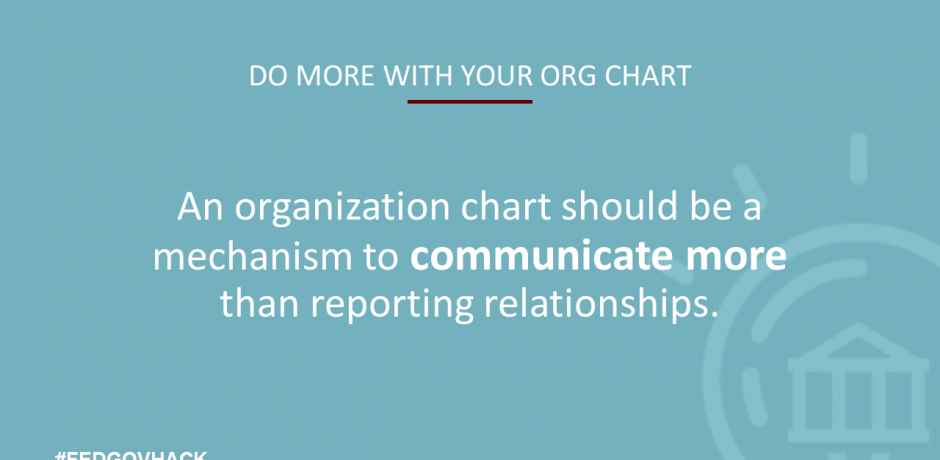Our Blog
Organization charts have not changed appreciably since their origins at the onset of the 19th century -boxes connected via straight lines or dotted lines to other boxes. The traditional organizational chart is relatively effective with communicating hierarchical relationships, but not much else.
Current literature reveals that there is much more to understand regarding the inner working of organizations aside from who is whose boss. For example, organizations strive when they can balance, diversify, and inspire personnel. Agencies could therefore adopt the organization chart to visually communicate individual’s strengths, development needs, and career aspirations. Agencies could adopt the organization chart to ensure strategic alignment by connecting individuals, not to each other, but to goals and objectives. Agencies could even adopt organization charts to display personality types, compensation bands, performance reviews, flexible work schedules, or key projects.
In the age of infographics and dashboards can’t agencies document more than just a stale tree diagram of names?


